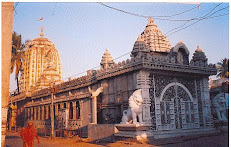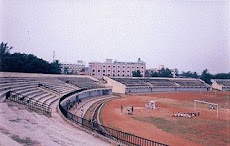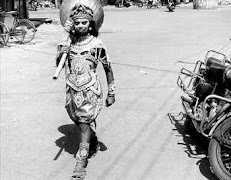Berhampur MunicipalCorporation (BMC) has mooted plans to use Rajiv Awas Yojana (RAY) to make the
city slum free by end of 2017. There are 256 recognised and unrecognised slum
pockets in Berhampur, the biggest commercial town in southern Odisha. Around
1.50 lakh, comprising about one third population of the city are the slum
dwellers. While several of them have their own houses without having basic
facilities in their areas, several others leave the pockets encroaching on
government land.
The target to make
Berhampur slum free was discussed at a workshop organised by the City Level
Technical Cell (CLTC) of the BMC on Friday. It was attended by all corporators
of the city, the Commissioner of the BMC Akhaya Kumar Mohanty, city Mayor Siba
Shankar Dash and dignitaries of the city.
 |
| Barracks, Berhampur |
“In a bid to make this
south Odisha city “slum free”, BMC is set to implement the centrally-sponsored
Rajiv Awas Yojana (RAY) through public private partnership (PPP) to provide
houses and infrastructure facilities in slum pockets. Around 400 housing units
are proposed to be constructed in two selected slum pockets at Chandi Sahi and
Jhilimili Nagar on a pilot basis”, says BMC commissioner A K Mohanty. “The
detail project report (DPR) for the pilot project, which is being prepared by a
private agency is likely to be completed next month”, he said.
As per a survey there
were 256 slums in BMC area. They have around 12,000 households. According to
Sangram Panda, the Slum Improvement Officer cum nodal officer of RAY, around 25
per cent of the city population live in slums. Largest slum in the city was located
on the banks of Dhobandha tank. The slums with worst living condition were
Pichpicha Nagar and Neliabandha Sahi.
Major tasks
 |
| Ramlingam Tank Road, Berhampur |
The aim of
implementation of RAY was discussed in detail for the corporators as they
happen to be key catalysts for its implementation. It was stated that a
detailed socio-economic survey was conducted at the slums of the city for their
rehabilitation. “This survey was conducted by an outside agency to avoid
chances of nepotism and partialism,” said Mr. Panda. Project report for
implementation of RAY would be prepared in a phased manner as per this survey
report.
The Commissioner of
the BMC stated that one of the major tasks of implementation of RAY was
identification of genuine beneficiaries who live in slums. According to him in
most slums middlemen owned the houses which were handed over on rent to the
poor.
For houses constructed under RAY, Central government would
provide 50 per cent of the cost, the State government would bear 30 per cent of
the cost while the rest 20 per cent was to be borne by the beneficiaries. So,
through the NGOs the BMC authorities have started to motivate slum dwellers to
start making savings so that when they are chosen to get houses under RAY they
could provide their share, said Mr. Panda. The corporators were also urged to
help in this motivation work.



















.jpg)


















































No comments:
Post a Comment